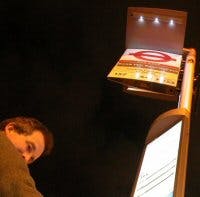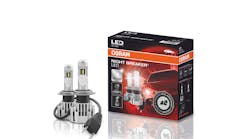However, LEDs have many hurdles to overcome before they make serious inroads into the general lighting market. For example, considerable improvements are needed in terms of efficiency, total lumen output and cost per lumen.
Nevertheless, LEDs are already being used in a wide range of applications such as architectural lighting (for example illuminating the contours of buildings or bridges) or entertainment lighting (e.g. providing light effects for stage shows and concerts).
Niche solid-state illumination applications include flashlights, cycle lights, desklamps, and solar-powered streetlights and bus-shelter lighting.
An issue that remains unclear at this stage is whether solid-state lighting will be a retrofit market, with LED-based bulbs for example replacing other types of lamp in existing fixtures, or whether a market will evolve for entirely new form-factors that take advantages of the special properties of LEDs.








